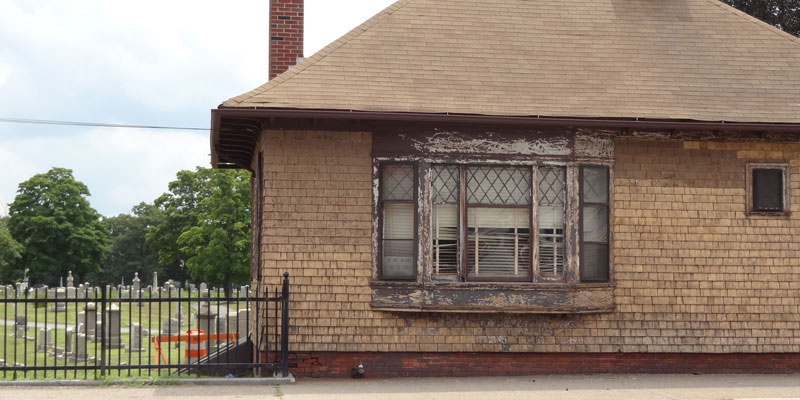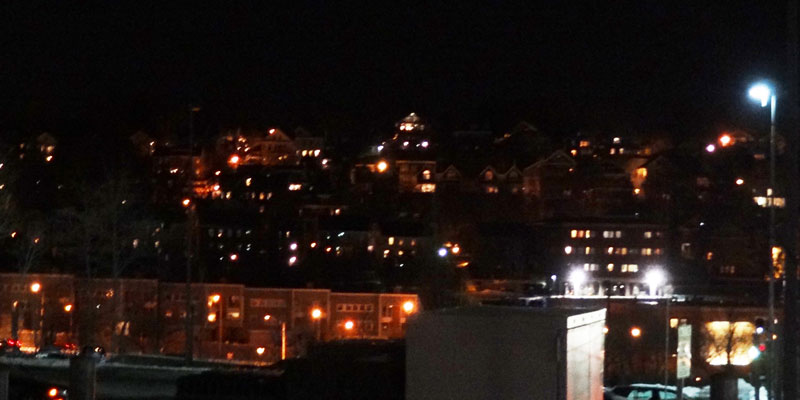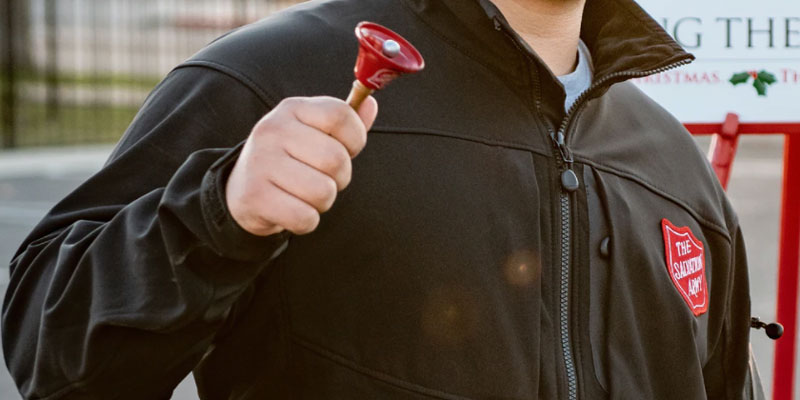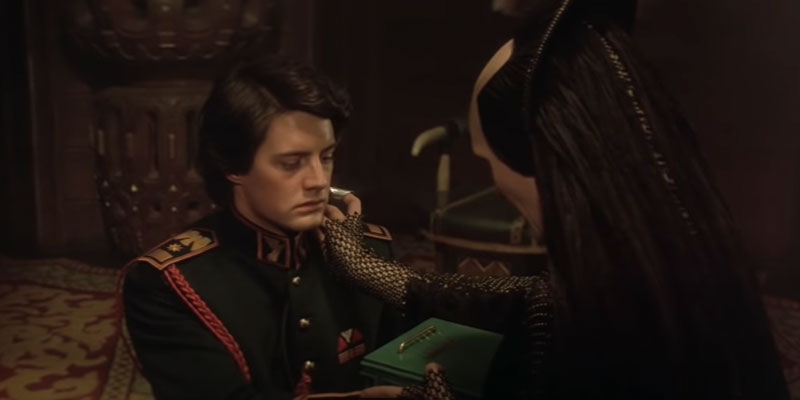This is an interesting report from Joseph Curl, for the Daily Wire:
Scientists at the Walter Reed Army Institute of Research think they have created a new vaccine that is effective against all COVID and SARS variants, according to a new report.
“Within weeks, scientists at the Walter Reed Army Institute of Research expect to announce that they have developed a vaccine that is effective against COVID-19 and all its variants, even Omicron, as well as from previous SARS-origin viruses that have killed millions of people worldwide,” Defense One first reported.
It isn’t inconceivable that we could come to the end of virus’s reign in human society. That said, we should be cautious about anything with such huge implications. We don’t know what we don’t know. The operation of viruses in our world might be having positive biological and social effects that we need to supplement, and more generally, there’s an intrinsic benefit to making your body strong independently of artificial intervention.
If socialism destroys our society’s ability to keep producing the miracle drugs, for example, we’ll very much want our immune systems to be well developed, not atrophied.
[Open full post]In case anybody is still making the claim that there isn’t any critical race theory (CRT) in American public schools, John Murawski has an extensive article on RealClearInvestigations presenting evidence that there is:
These denials, which have been amplified by many news organizations, are at odds with overwhelming evidence – documented by class lessons, school curricula, focus groups, teacher surveys and public statements by educators – that CRT is not only taught in class, but is also heavily promoted by the K-12 education establishment.
Some high schools are already teaching lessons and units on CRT, where students write papers demonstrating their facility with applying the theory, while other schools are introducing CRT concepts, such as systemic racism, white privilege, microaggressions, implicit bias and intersectionality.
Public and private schools are also training teachers, staff, administrators – and even parents – on the elements of critical race theory, which school administrators see as an indispensable tool for dismantling what activists describe as America’s racial caste system.
I think we’ve reached the point in the public debate that the mainstream media will deliberately stop giving the issue any air, hoping the flame will go out.
[Open full post]I used to think that the people who wrote news articles strove to understand the subject matter in order to provide readers with a fair understanding of the content, with due skepticism about the claims of the interested parties who provided it (politicians, activists, businesspeople, etc.). Boy, was that naive.
Anybody with any familiarity with Rhode Island politics knows that Democrat State Senator Sam Bell is a far-left activist who will say nearly anything to advance his cause. (My favorite is still the time in a public debate he counted both legislation changing the income tax structure and legislation that undid some of that change as “tax cuts for the rich.”)
And yet, Antonia Noori Farzan and her editors at the Providence Journal let him get away with this headline about a report Bell just released with his undergraduate intern, Phoebe Dragseth: “Rhode Island failed to use more than $1 billion for affordable housing, state senator says.” First paragraph:
Rhode Island has failed to take advantage of more than $1.3 billion in federal funding that could have been used to construct affordable housing, according to a new report released by state Sen. Samuel Bell, D-Providence.
We should acknowledge that the 19-page report is an impressive achievement for a college sophomore (assuming it was largely her work). Of course, with a nod to Bell’s fellow progressives, we should recognize the amount of privilege supporting the white Ivy League child of Ivy League and professorial parents.
Even so, when it comes to public policy questions concerning billions of taxpayer dollars, readers don’t (or shouldn’t) expect the state’s major daily newspaper simply to provide PR summaries of the work of undergrads, even if it is handed over under the name of radical activist politicians. Just an ounce of skepticism and curiosity about the claims would change the impression of the story dramatically.
For example, a key reason developers aren’t utilizing the full opportunity of the federal subsidy is that the restrictions don’t make it profitable to do so. In response, Bell and Dragseth conclude that the state should be subsidizing the projects even more, to make them profitable for developers. One’s heart warms to see Bell making a huge ideological concession in acknowledging that people need to make money in order for professional business activities to be worth their while. Nonetheless, this concession detracts from, or even eliminates, his entire claim about “wasted” funds.
Bell and Dragseth estimate that the state would have to subsidize developers with another $89 to $186 million per year. In order to have claimed the seven years of “wasted” federal credits totaling to $1.3 (actually $1.4) billion, Rhode Island taxpayers would have had to pay an additional subsidy of $623 million to $1.3 billion.
This is like complaining that your parents forced you to waste a coupon to your favorite store because they wouldn’t give you the value of the coupon in upfront cash. Sure, you might have to “waste” a 38%-off coupon for a $1,000 gadget if you don’t have the other $620, but don’t blame mom and dad for their unwillingness to give you $380 simply for the sake of capturing the value of the coupon.
In public policy, the key is that this money has to come from somewhere else, which Bell and Dragseth acknowledge when they suggest shifting funds from other programs for their purpose. However, far from highlighting this important detail for her readers, Noori Farzan studiously avoids it in her article, leaving the impression that spending billions of dollars can be essentially cost free.
To the contrary. Implemented as recommended, the Bell-Dragseth program would do all of the following:
- Put state taxpayers in more debt, while gambling on projects that may never appear
- Reduce funding for other programs, like student loans
- Reduce the level of affordable housing for families whose income is slightly higher, although still relatively low
- Create incentive for Rhode Island institutions to draw the most-poor families into the state
- Reduce the value of new properties in the unsubsidized market
- Further erode Rhode Islanders’ right to develop their communities to suit their own interests and preferences
We can go into detail on how each of these would be predictable outcomes of an effort to fully capture a poorly designed federal subsidy, but as a starting point, it would be nice if professional journalists would offer the service of reporting activists’ studies as if the world is more real than a classroom discussion.
Featured image by Justin Katz.
[Open full post]Blue Cross Blue Shield of Rhode Island and Brown University now have several years of data in the compilation of their Rhode Island Life Index, which is basically a survey of how Rhode Islanders perceive various aspects of the Ocean State experience. Subindexes contributing to an overall score of 63 (out of 100) include:
- Quality of Community: 57
- Community Life: 71
- Children (i.e., how residents “rate programs and services for children”): 74
- Older Adults (i.e., how residents “rate the availability of services in their community for older adults”): 67
- Access to Nutritious Food: 73
- Affordable Housing: 40
- Cost of Living: 31
- Job Opportunities: 57
- Healthcare Access: 73
- Racial Equity: 74
- Food Security: 88
- Economic Situation: 64
- Access to Technology: 88
These categories present an interesting lens through which to view statewide politics. If we see government as a collective institution by which we address the biggest challenges of our communities, then one would expect politicians to be stepping forward promising to address areas with low scores. The alignment, however, is mixed at best.
Progressives don’t really want to talk about the lowest-rated category, Cost of Living, because it’s bound up with so many of their economic and environmental policy solutions. On the other hand, we hear a lot about addressing Racial Equity, even though Rhode Islanders don’t seem to be too concerned about it.
This intrinsic bias toward an ideological framing can be seen in the fact that the survey creators thought it most relevant to break the results down by race (“Latinx,” black, and white) and “Core City” versus “Non-Core.”
Of course, I’m falling into the trap of these sorts of studies, which is to draw one into thinking government ought to be actively looking for discomfiting problems to solve. Readers rarely click away from such surveys thinking about how we as individuals or a community distinct from its government can address complaints. It’s almost not a question what we can do, perhaps because part of what we can do is to restructure the way we do government. One suspects blank stares of incomprehension would meet any suggestion that government is the cause of many of our problems.
This point comes home with a wallop in what is not said in Barbara Morse’s WJAR article about the study. Consider:
“Certainly kids have been among the group hardest hit by the pandemic,” said Michele Lederberg, executive vice president for Blue Cross & Blue Shield of RI.
Our government officials must have done something wrong in the handling of the pandemic in order for a disease that doesn’t affect children much to claim them as an acute group of victims. Government did that — Gina Raimondo, Dan McKee, the General Assembly, town and city councils, school committees, and so on.
Only in a system that directs attention in the wrong direction (a misdirection, some would say) would it be possible for Morse’s employer to headline an article by her fellow journalist Ashley Cullinane, “Should school districts go remote after the holidays?”
No. Next question. Somewhat surprisingly, the RI Life Index finds that residents are not very down on services for children. Government officials should stop working to mess that up.
Featured image by Justin Katz.
[Open full post]The current occupant of the White House may have dialed our nation’s capacity to generate sources of energy, but at least our system for handling its shipment and export is moving forward:
The United States is on course to have the world’s biggest exporting capacity of liquified natural gas (LNG) by 2022, surpassing Qatar and Australia, owing to increased domestic production and a soaring demand from international markets, especially China.
Global demand for LNG has grown steadily, hitting annual record highs since 2015. European economies and emerging Asian markets depend on LNG for power production and heating requirements. This demand has been met by American companies who have been exporting LNG since 2016.
I’ve been listening to the Jordan Peterson podcast, recently, on which he has compelling conversations with interesting people. Whenever the idea of human thriving comes up, recently, Peterson puts forward the conclusion that the way to help humanity and the environment, in the long run, is to make the energy cheaper and more-widely available. Period.
It’s mind-blowing that a powerful political faction is so bent on moving in the other direction. It’s as if they want people to suffer.
[Open full post]Governor McKee, I believe it was your December 15th Press Conference when responding to a question about your highly restrictive policies, your comment was something like, “If anyone has any other ideas, I’d love to hear them.”
I’m penning this open letter because I have other ideas, and as it takes several weeks to months to get an appointment with your office, and the RI press corps does not seem interested in accurately covering anything from Republicans recently, I felt the only way to offer these “other ideas” before it’s too late is through an open letter.
Governor, there is a storm coming and you are not preparing for it.
The press release announcing your December 15 press conference began “Governor McKee Announces Comprehensive Actions to Address COVID-19 Cases and Alleviate Pressure on Hospital Systems While Keeping Schools Open for In-Person Learning and Preventing Economic Disruption to Small Businesses.” You then laid out a series of extremely strict, crippling requirements for both the citizenry of, and the businesses in the state of Rhode Island.
Governor, with all sincerity – the actions you announced will do little to nothing to “alleviate pressure” on our hospitals, keep our schools open for in-person learning, and especially they will not prevent economic interruption in our business community. My statements are not political in nature, and I am not criticizing your approach for partisan reasons. I am writing to you to point out that you are not focused on the right things necessary to achieve the goals stated in the headline of your press release.
First, the burden on our hospital system has been growing since far before the COVID pandemic, however this health crisis has expedited the inevitable and total collapse of our healthcare system, and your policies are regrettably hastening that. We are constantly updated on how our hospitals are “near capacity” and I think that by now most have come to recognize that this statement, while used so ubiquitously, is misleading. Our hospitals are nearing “staffed capacity.” Which means the estimated 30% of hospital and medically licensed personnel across RI you fired are no longer able to work in the healthcare industry, thus reducing the “total capacity” of a 100 bed facility to 70 beds if they have the proper staffing (this doesn’t even include the increased staffing law that you signed this year which goes into effect soon.)
Furthermore, the most recent figures that we’ve seen are that 11-13% of hospital admissions were with or from COVID. That leaves the remaining 87-89% of admissions to things other than COVID. We have also further identified that far too many people have been putting off routine procedures, screenings and doctor visits for the past 2 years which is already contributing to an increase in hospitalizations now, and will incontrovertibly contribute to an imminent increase in hospitalizations for much more serious health reasons in the months and years to come.
When we factor in the burn-out of our healthcare professionals and combine that with Rhode Island’s anemic Medical Reimbursement Rate which helps fund all medical positions and is especially impactful in the CNA and social work fields which are relied upon in every single healthcare setting from hospitals, nursing homes, and any other congregate care setting, we are hemorrhaging healthcare workers and an unrecoverable rate.
The professionals on the one end of the spectrum including doctors, nurses, LPNS, PAs, X-Ray Techs et al are burning out, retiring early, or leaving their fields at an alarming rate. The professionals on the other end of the spectrum including CNAs, social work staff and other support positions that are paid in part through Medicaid Reimbursement, are leaving Rhode Island because they know that that they can either drive an extra 10-15 minutes and go work over the state line in CT or MA and earn up to 50% more for the same job, or they are leaving those fields altogether because the private market has increased its wages due to crippling government programs and mandates where instead of changing bed-pans for $14/hr., they can ring groceries for $19/hr. or flip burgers for $17/hr. And they are choosing to do exactly that. We as a state have been grossly negligent in maintaining a competitive Medicaid Reimbursement Rate.
As has been clearly established, the Omicron Variant of COVID is spreading rapidly and it comprises 75% of all diagnoses in the US as of 12/21/21. There is also clear evidence that this variant has much less concern about who is vaccinated. Clearly this is a variant that spreads more easily and despite all the masking and proof-of-vaccination requirements, will not just continue to spread, but will spread exponentially.
If the RI government is telling us that our hospitals are at “critical capacity” right now, then we are in for one hell of a winter without adopting proactive measures instead of reactive measures. This much is clear – the number of COVID hospital admissions will increase dramatically, and the number of people leaving healthcare with increase as well. FEMA aid notwithstanding, our hospitals will become buildings lined with gurneys of suffering patients waiting hours to days to be treated or even seen. These gurneys will fill the rooms, line the hallways, and take over breakrooms. Patients seeking admission to the hospital for otherwise serious issues will be turned away and told they are better off at home. We won’t recognize our healthcare system anymore.
Finally, one of the impending federal mandates for small businesses is to have unvaccinated employees “provide a negative test every week” in order to remain employed. As of 12/21/2021 the federal mandate has not kicked in and most companies are not enforcing a “weekly test” policy. As of this moment we are seeing 6-8 day turnaround times on PCR tests, and the “instant” antigen testing system in RI is not even accepting appointments for 4-5 days. This rush on testing, and the government’s typical reactionary measures to it are going to make the “once per week testing” option for employers impossible, compelling them to release even more of their staff, and place even more people into immediate financial crisis because as we know, the state refuses to pay unemployment to these citizens. This will be the next crisis to deal with – the overwhelming number of people who are not allowed to work, nor are they being allowed to use the unemployment insurance that they themselves funded. This will lay irrevocable devastation across Rhode Island’s small business community.
“Other Ideas”
This can all be avoided. Instead of turning to heavy-handed mandates that will be enforced by government agents raiding businesses and issuing fines and closure notices over who has a mask on or who has the most recent booster – we should be focused on solving the problem and not oppressing and punishing our already suffering citizens and small businesses. Take all those resources – be they financial, human or consumable and redirect your energy toward helping people rather than punishing them.
On the same day as your press conference, December 15, a constituent reached out to me because they had been exposed to the virus, started feeling ill, and as a sufferer with acute COPD, they took a rapid test which came back positive. By this time, the individual was having breathing issues and their doctor prescribed Monoclonal Antibody (MAB) treatment on the spot. MAB is a therapy that is infused via IV and has had remarkable results in completely reversing the progression of the virus and has eliminated or reduced the length of hospitalizations more than any other treatment. This individual called their local provider of MAB and was told there was an 8-10 day wait to get in for an appointment. This person then called several other providers and was told the same thing – 8 to 10 days for an appointment. The individual then called me. I quickly learned that regardless of where they go, the wait will be the same because the state is overrun with requests and cannot fill them all. This was last week. A mere six weeks prior, an individual could have walked into a MAB center anywhere in RI and received their infusion on the spot. Last week they waited 8-10 days, and the full outbreak hasn’t even really started. A person in dire need of MAB will not survive 8-10+ days waiting for an appointment, and they will inevitably be hospitalized.
Why must they wait 8-10 days? Is it because we don’t have enough medicine? Maybe we don’t have enough facilities to use? Maybe it’s far too expensive and the insurance companies won’t cover it. No. None of those things are the problem. The problem is that we fired the staff necessary to administer the infusions. Yes, it’s that simple – we have everything we need except the people to administer the lifesaving treatment.
That’s right. There is plenty of medicine for this treatment. The health insurance companies in RI are absolutely begging to pay for every cost associated with administering MAB because those costs are insignificant when compared to those of a hospital stay. Any medical or EMT facility can be used to provide the infusion. In fact, we could be using our local fire departments and ambulance corps and their staff to be administering the infusions right in our own communities. All we need are licensed paramedics, and the health insurance industry will help set them up with everything they need and train them to start curing people right in their own towns. But we don’t have the staff because we fired them.
Now for the solution. First, a person seeking MABs already has COVID, so the hyperbolic “danger” they are in while being treated by an unvaccinated healthcare worker is moot. Next, reverse course on the ridiculous vaccine mandates for healthcare providers, or at a minimum allow those with naturally acquired immunity who are qualified to administer MAB infusions to staff these infusion centers that we can set up in every community. In fact, all you really need to do is look in your own back yard of Cumberland to see that their Fire Departments have done exactly what I describe here and are saving peoples’ lives and keeping them out of the hospital on a daily basis using this community model with paramedics.
Governor, if you want to keep hospitals functional through the impending onslaught of COVID cases during this winter, please talk to our health insurance providers, take charge of your own Department of Health and demand they create procedures for reactivating the licenses of, and working with the nurses, paramedics and doctors who’ve been terminated to bring them back in this capacity to help mitigate the inevitable increase in COVID hospitalizations. If you have the courage to lead on this, you very well may be able to say that you prevented the collapse of our healthcare system.
This is the leadership that our state needs. You can continue to do what everyone else is doing by playing “follow the leader”, and you’ll continue to get more of the same of what each of those “followers” have. But if you dare to be a leader and institute bold policies that are scientifically proven to achieve the goals you state as your own, you may just pull this off. If you stay on the same course, our state will continue to suffer, only much greater.
Michael Chippendale is a Republican state representative for district 40, covering Coventry, Foster, and Glocester.
Featured image by Hiroshi Tsubono on Unsplash.
[Open full post]Enforced use of the term, “Latinx,” is exactly the cultural imperialism that progressives claim to oppose. As usual, they only actually oppose the forced spread of ideas that don’t jibe with their own beliefs. Just look at how Marisa Penaloza writes about a Pew Research Center survey finding “only 3% [of Latinos] say they use the term.” I’ve emphasized the key words in the following:
- “Latinx Is A Term Many Still Can’t Embrace”
- “Latinx has not caught on.“
- “only 23% of Hispanic adults have heard of the term Latinx.”
- “Some argue that Latinx is not Spanish enough, but Vazquez says they need to remember that ‘Spanish…is the original language of colonization.'”
The condescending attitude is that change is inevitable, and resistance is retrograde. When it’s useful to claim, progressives insist that “our Black and Brown brothers and sisters” have “beautiful cultures.” When those cultures disagree, the script instantly flips to a reminder that brown people were colonizers, too.
[Open full post]Interestingly, Dr. Michael Fine is against non-vaccination shaming, mainly because he isn’t very confident in the vaccines we have against COVID. One gets the impression, however, that he makes that concession in order to promote his real goal:
If everyone stops going to bars and restaurants TODAY, and stops shopping TODAY, we’ll see a drop in community transmission in about ten days, or two to three generations of spread. The load on hospitals and other health care folks will start to drop in about two weeks.
… we can just stay home for a bit, take the responsibility for public health back from a government that puts business and commerce before human lives, and, in doing so, rebuild our democracy just a little, doing for others what we would want others do for us.
He doesn’t explain how destroying our fellow citizens’ livelihoods furthers democracy. Some might think doing so will make more people dependent on the government that has so disappointed Dr. Fine.
It’s a strange ideology, socialism, desiring to consolidate power in a few as a first principle against all evidence of wisdom.
[Open full post]Kelly O’Neill reports for WJAR that the Salvation Army is 11% behind on donations in Rhode Island and 30% in New Bedford. Whether the percentages are “behind the goal” or “behind last year” isn’t clear, but it amounts to tens of thousands of dollars in this area. Rhode Island’s state coordinator, Roger Duperree points to staffing shortages for bell ringers, but his New Bedford counterpart doesn’t seem so sure:
“Last year, we met our goal. This is strange for me this year because we are not close to the goal,” Maj. Michael Jung said.
Outside of the mainstream bubble, however, these results aren’t surprising at all (regarding both the donations and the volunteers). If you don’t exist entirely within the boundaries of approved information, you know that a wave of disapproval swept through the country when an internal guidance document came to light showing the Salvation Army to have swallowed the racist, antiracist pill:
The resource guide itself contains “five sessions” to “help delve into the topic of racism and the Church.” Those include entire sections titled. “Self-Care for People of Color,” “What is Whiteness?,” “Lamenting and Repenting — a Conversation Guide,” among others.
The guileless Christians in the organization helpfully expose just how racist this ideology is, admonishing the reader to “stop trying to be ‘colorblind’,” because not being racist “actually ignores the God-given differences we all possess, as well as the beautiful cultures of our Black and Brown brothers and sisters.” As is typical, all cultures are beautiful… unless you’re white. In that case, your culture must be deconstructed to show the decidedly non-beautiful core of “white supremacy.”
For people with white skin, “a sincere apology is necessary.” In response to donation shortfalls across the country, the organization hid the guidance in a desk and offered a palpably non-sincere apology for having been maliciously misunderstood. Maybe some donors were satisfied with that lack of repentance, but when certificates “redeemable for one white apology in lieu of a cash donation” are circulating widely, at least part of the Salvation Army’s mystery may be solved.
Featured image by Tim Mossholder on Unsplash.
[Open full post]With Dune back in the popular culture, all people of good will and right mind should be relieved that it includes one of the most profound moments of the book, captured here in the prior movie adaptation because it was the best clip I could find quickly:
The quick summary is this: The priestess lady is testing the protagonist. She presents a choice: he sticks his hand in a box that produces pain, and if he can take ownership of his will and keep his hand in the box, he lives; otherwise, she’ll prick him with deadly poison, and he’ll die. The test will prove he’s human.
Something of the same sentiment can be found in an effectively censored speech by Abigail Shrier at Princeton University reproduced on Bari Weiss’s Substack. For context, Shrier rocketed into the hall of cancelation fame when she dared to publish a book investigating the dreadfully harmful contagion of teenage girls’ proclaiming themselves to be something other than teenage girls only to have their schools and doctors abet their adolescent impulses toward irrevocable self-mutilation against the will of their parents. Here’s the profound conclusion:
I’m 43, which I realize makes me very old to many of you. But not so long from now, you’ll wake up and be 43 yourselves. And when I look back on my life thus far, it occurs to me that the decisions of which I am most proud—the ones that strike like an unexpected kiss—are not the times when I obeyed the algorithm. They’re the times when I defied it and felt, for a moment, the magic and power of being alive. When I felt, even for an instant, the exquisite joy of not being anyone’s subject. When I had the unmistakable sense that I’ve existed for a purpose, that I stood the chance of leaving the world better than I found it. You don’t get any of that through lock-step career achievement and you certainly don’t get that by being the Left’s star pupil.
The lesson I hope we’ve learned since Frank Herbert first published Dune in 1965 (but fear we have not) is that we shouldn’t assume that the truth is the opposite of what others say it is so that we can prove our autonomy by rebelling against it. That is basically what the transgender craze is bringing to life, but it is merely another way of lacking free will. The difference is only that the computer algorithm that controls you introduces a negative sign at some point.
Imagine not a pain box, but an affirmation box, and the priestess will kill you as a non-human if you do not withdraw.
[Open full post]





